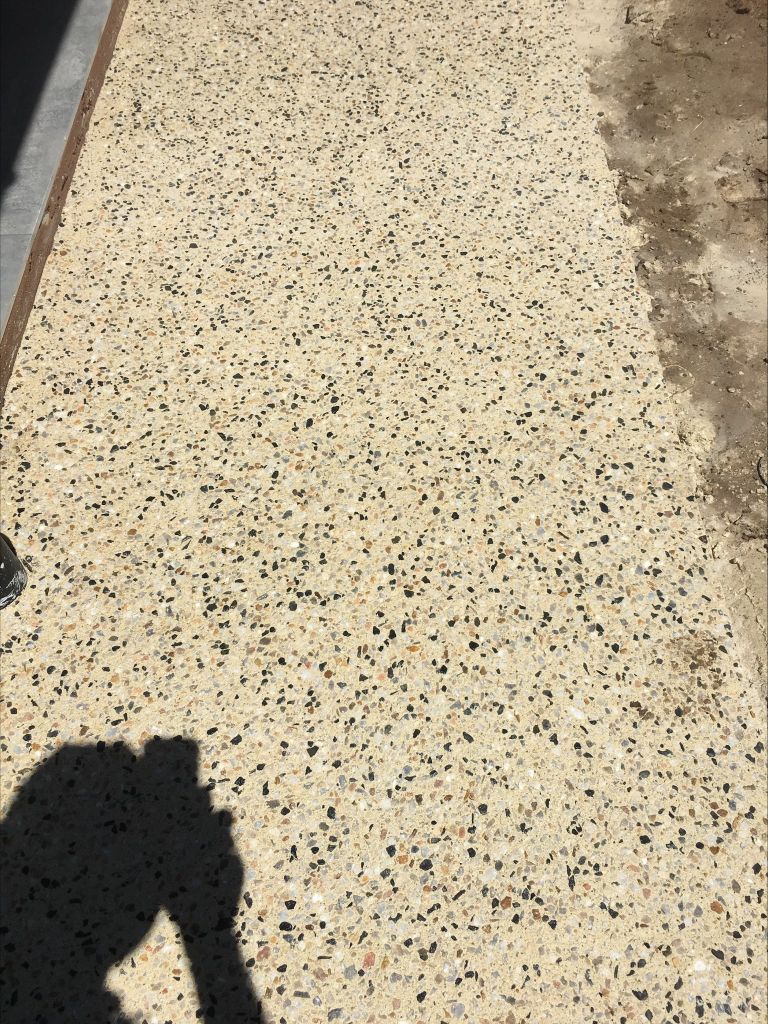What is the Difference Between Aggregate and Exposed Aggregate Concrete?
Introduction
Understanding the basic terminology associated with concrete can significantly assist homeowners, builders, and designers in making informed decisions about construction and renovation projects.
Two terms that often create confusion are ‘aggregate’ and ‘exposed aggregate concrete’.
Despite the similarities in their names, they refer to different aspects of the concrete mix and application. In this article, we explore the differences between aggregate and exposed aggregate concrete.

I. Understanding Aggregate: The Building Blocks of Concrete
Aggregate refers to the granular material used in the composition of concrete.
It typically includes a combination of sand, gravel, crushed stone, slag, or other elements. Aggregates make up a significant portion of a concrete mix – often up to 60-75% – and they play crucial roles in determining the properties of the finished product.
Types of Aggregates
Aggregates used in concrete can be categorized as fine or coarse. Fine aggregates are usually sand or crushed stone that are less than 9.5mm in diameter.
Coarse aggregates are particles greater than 9.5mm and can even measure up to 40mm.
Role of Aggregates
Aggregates work in conjunction with cement and water in a concrete mix. The cement and water form a paste that binds the aggregates together.
The aggregate provides strength to the concrete, reduces shrinkage and influences its durability, and thermal properties.
II. Defining Exposed Aggregate Concrete: A Decorative Application
Exposed aggregate concrete is a decorative form of concrete made by removing the top layer of cement paste to reveal the underlying aggregate.
This technique creates a visually pleasing, textured surface known for its durability and skid resistance.
Process of Creating Exposed Aggregate Concrete
This decorative effect is achieved by first pouring concrete mixed with chosen aggregates.
While the concrete is still wet, the outer layer of cement is then removed by methods such as brushing, washing, or using a surface retarder.
Once the concrete hardens, the exposed aggregates create a beautiful and rugged surface.
Uses of Exposed Aggregate Concrete
Exposed aggregate concrete is widely used in various applications due to its aesthetic appeal and practical properties.
It’s ideal for driveways, walkways, pool decks, patios, and even interior floors, where both beauty and durability are required.

III. Comparing Aggregate and Exposed Aggregate Concrete
Material vs. Technique
Aggregate refers to the material used within the concrete mix, while exposed aggregate concrete is a technique that brings the aggregate to the surface of the finished concrete product.
Visibility
In regular concrete, the aggregate material is not visible as it is completely encapsulated within the cement paste. In contrast, in exposed aggregate concrete, the aggregate is intentionally revealed as part of the concrete’s finished surface.
Aesthetic Differences
Regular concrete has a smooth, uniform appearance, while exposed aggregate concrete is characterized by its rugged texture and varied color, depending on the type of aggregate used.
Conclusion
Aggregate and exposed aggregate concrete play vital but different roles in the world of construction and design.
While aggregate forms the backbone of all concrete mixes, adding strength and structure, exposed aggregate concrete is a decorative technique that adds visual interest and practicality to a concrete surface.
By understanding these differences, individuals can make better decisions for their construction needs.
